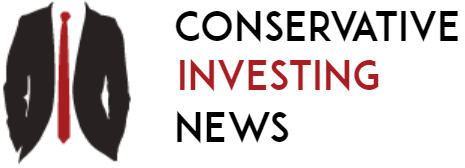President Trump is right to call out the Federal Reserve for keeping interest rates too high and wasting money on extravagant renovations to its Washington headquarters. Treasury Secretary Scott Bessent last week suggested a half-point rate cut in September and urged deeper changes at the Fed, saying that the central bank faces problems in its foundation.
Both a larger-than-expected rate cut and foundational changes at the Fed would be major pro-growth innovations in U.S. economic policy, but strong resistance is likely this week during the Fed’s annual celebration of central banking in Jackson Hole, Wyo.
The academic economics community maintains tight control over the Fed and generally claims that the current system is working well—this despite the Fed’s enormous size and history of causing wide swings in inflation, interest rates and the dollar that work against wage gains and affordability. To satisfy critics, the Fed may adopt a few narrow reforms and cut the interest rate by only a quarter point in September, but that would be too little, too late.
Markets reacted positively to Mr. Bessent’s call for a decisive rate cut and repairs in the foundation. Bond yields fell and small-company stock prices rose. Coupled with President Trump’s pro-growth tax, manufacturing, energy and regulatory reforms, this presents an ideal opportunity for sweeping reforms in the Fed’s models to support lower short-term and long-term interest rates. The Fed would need to jettison its antigrowth models that target backward-looking inflation data, impose speed limits on growth, and assert that too low an unemployment rate causes inflation.
One foundational change for the Fed would be anchoring its inflation-fighting policies in forward-looking, market-based data with a goal of defending the dollar and expanding its use as the world’s reserve currency. There’s no necessity for the current high level of interest rates and bond yields. The 4.4% interest rate that the Fed pays banks on reserve balances, with nearly 40% going abroad, is much higher than inflation, higher than most foreign interest rates, higher than small businesses can afford, and inconsistent with the creditworthiness of the world’s economic superpower. The Fed says current rates are appropriate, but it alters the market by borrowing trillions of dollars from banks at whatever rate it sets.
A lower interest rate would allow more businesses to invest in the supply chain and compete on price. It would provide hundreds of billions of dollars of savings on the national debt, strengthening the investment climate, inviting further reductions in interest rates, and accelerating the rebuilding of America’s factories and supply chains.
Another foundational change for the Fed would be shrinking itself—a move that’s long overdue. The Federal Reserve system is way too large: It includes 36 regional banks and branches outside Washington. It intervenes in too many markets and has consumed the once-vibrant markets for interbank loans, fed funds and repurchase agreements. Those markets could be reopened.
The Fed still operates on the theory that fast growth causes inflation and that high interest rates somehow fight inflation. It isn’t clear why it uses either model. High interest rates hurt producers and supply chains more than consumption, especially when government spending makes up a large chunk of the economy and is immune to interest rates.
For decades, central banks around the world have claimed that high interest rates will cure inflation, then have provided excuses for why it didn’t work. The Fed under Chairman Paul Volcker fought the Carter administration’s high inflation with high interest rates, but doing so triggered two recessions. Inflation subsided only when President Ronald Reagan fought it with fast-growth policies.
High rates today are helping wealthy Americans, money-market funds and bank earnings, but they hurt production and price competition. Corporate bankruptcy filings in June hit a 15-year high.
The Fed’s models rely on lagging estimates of prices, ignore weakness in the dollar’s purchasing power, and claim Fed economists can divine the appropriate level of interest rates for an ever-changing market-based economy. To justify its $6.7 trillion in assets, the Fed asserts that banks need to maintain a high level of loans to the Fed (currently $3.3 trillion) and insists that this diversion of bank lending to the Fed doesn’t crowd out small-business loans. The Fed ignores conflicts of interest between its rate-setting function, its ownership of trillions of dollars of rate-sensitive bonds, and its invasive regulation of the banks that lend it money. It imposes layers of often-conflicting capital requirements on risk, liquidity and leverage that drive bank lending toward government and large corporations. This regulatory complexity and overkill discourages banks from offering the core working capital loans needed to fund robust supply chains.
The Fed’s outdated antigrowth models work strongly against Mr. Trump’s growth agenda. Many of the Fed’s onerous financial regulations are holdovers from the Obama and Biden administrations’ anti-bank and anti-energy regulatory maze. Transforming the Fed would create an opportunity to lower interest rates, save billions of dollars in interest payments and build market confidence in U.S. investments and the dollar.
Mr. Malpass was an undersecretary of the U.S. Treasury 2017-19 and president of the World Bank 2019-23.
